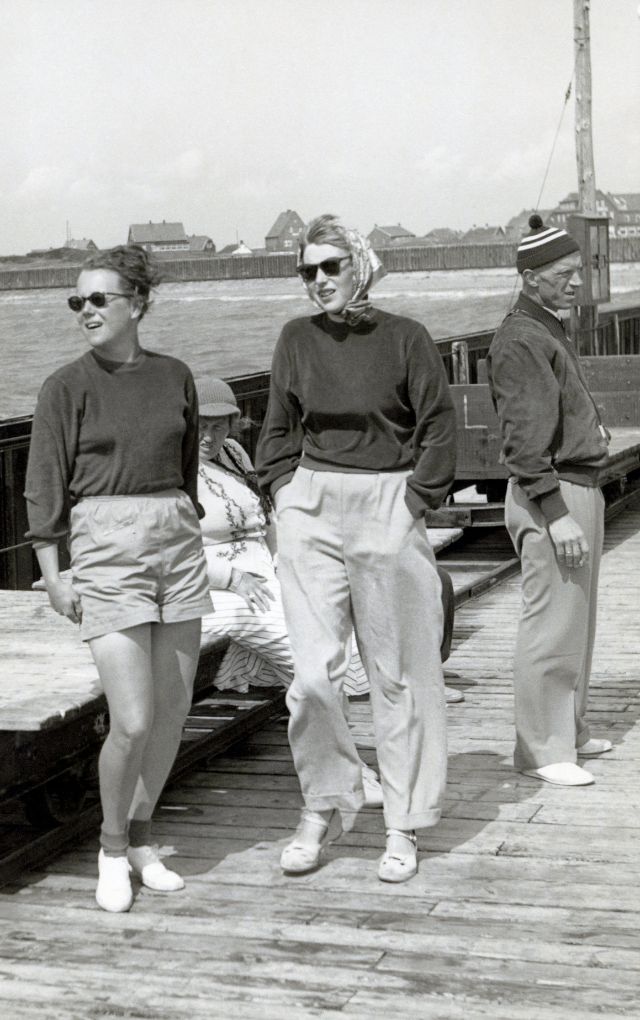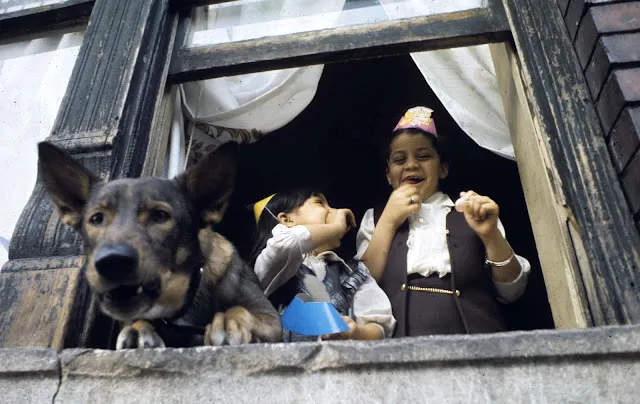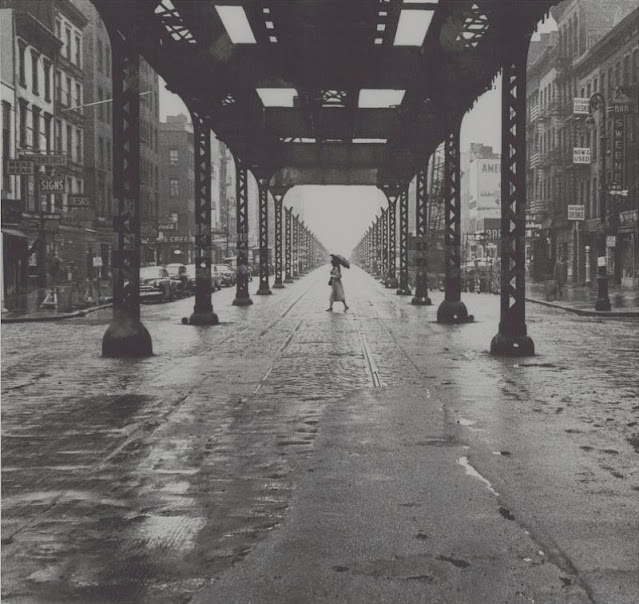On February 19, 1942, shortly after Imperial Japan’s attack on Pearl Harbor, U.S. President Franklin D. Roosevelt signed Executive Order 9066, a policy that people of Japanese ancestry would be forced to relocate and incarcerated in concentration camps in the western interior of the States.
Following a Supreme Court decision in 1944, which ruled that the War Relocation Authority “has no authority to subject citizens who are concededly loyal to its leave procedure,” the interment came to an end, even though it was not only until March 1946 that the last camp was officially shut down.
These photographs taken by American photographer Charles Mace below depict the Japanese-American reintegrating into American society after the wartime internment, but in retrospect, it is difficult not to consider them as pure propaganda for the government:

|
| Children have their own standards in their selection of friends and playmates, Libertyville, Illinois, 1943. |
 |
| A committee on housing is shown in session in Indianapolis. Mrs. Royal McLain (left) is seen discussing ways and means of finding suitable quarters for the many relocatees who are finding employment in Indianapolis, 1943. |
 |
| Miss Susie Yuasa, 18, a former evacuee from the Jerome Relocation Center, now employed in a Chicago candy factory, turns from her task momentarily to display the familiar symbol of victory, 1943. |
 |
| Miss Irene Eiko Yonemura works in the Peoria, Illinois, public library, where she has found work much to her liking and her training. Miss Yonemura is from the Poston center and came to Peoria in the summer of 1943, 1944. |
 |
| Another freedom of considerable importance to the young feminine mind in America is the freedom to shop for and wear pretty clothes. These two Nisei girls are again enjoying that privilege, Chicago, Illinois, 1943. |
 |
| Eugene Kodani, from the Poston Relocation Center, now employed at the Greening Nursery Company, Monroe, Michigan, where he is engaged in budding peach trees, 1943. |
 |
| Mei Yamasaki, relocated in Indianapolis from the Tule Lake Center, is now employed as secretary and office manager of The Union, an Indiana labor paper, 1944. |
 |
|
The Oda sisters like to entertain their friends in their apartment in Rockford, Illinois, 1944.
|
 |
| Happy Nisei and Caucasian couples throng the dance floor of the YMCA at the All-American Fun Night program in Chicago this winter, 1944. |
 |
| At St. Anthony's Hospital, Rockford, Illinois, the Nisei and Caucasians work together, 1944. |
 |
| In the kindergarten of the McHenry, Illinois, grade school, the 6-year-old Okazaki twins, Sazami (left) and Toshiko (right), thumb through a picture book while their teacher and a classmate look on, 1944. |
 |
| Miss Julie Sugimoto (l) and her sister June (r), work in the home of the Burchette family in Peoria, Illinois. June, plus her work at the home, is learning to be a photo retoucher, 1944. |
 |
| When the Nisei get together for social entertainment in Chicago, their Caucasian friends also participate in the general fun. At the mike is a popular Chicago night club singer who has just presented one of her specialties, 1944. |
 |
| Mary Nakamura is a sophomore at East High School, Rockford, Illinois. Biology is one of her favorite subjects, and in this picture she is shown receiving instructions from her teacher, 1944. |
 |
| The honored American custom of raiding the icebox is especially pleasurable to the Yamadas after life in a relocation center, Peoria, Illinois, 1944. |
 |
| Little Bernice Hijama, three, watches her mother pick a bucket of oranges from the trees surrounding their vineyard home near Fowler, California, to which the family has recently returned from the Gila River Relocation Center, 1945. |
 |
| Naomi Asakura, age 4, daughter of Mr. and Mrs. Taki Asakura, who returned to Santa Barbara from Gila River on March 17, is seen enjoying the company of a puppy given to her by a neighbor, 1945. |
 |
| No discrimination in this huddle. Akshi Alan Asakora plays football in the yard of the Lincoln School in Santa Barbara, where he has resumed studies since his family returned to their former home from the Gila River Center, 1945. |
 |
| Another American citizen has arrived at the home of Joe Takeda since night-riding hoodlums set fire to his house and sent five 32-caliber slugs crashing through the dwelling while the family slept, 1945. |
 |
| Mary Kageyama, Song Bird of Manzanar, and her younger sister, Tillie, at the piano, have relocated in Pasadena. Mary is a contralto favoring torch songs, and likes "Night and Day" the best, 1945. |
 |
|
Mary Kitano from Manzanar works for City New Service in Los Angeles, 1945.
|
 |
| Miss Aiko Kiroki, who returned to Berkeley from Granada April 16, is seen in her comfortable home at 2411-1/2 Dwight Way, Berkeley. Miss Kiroki is blind, but has found work which she can do in her home, 1945. |
 |
| Michiko Kataoka, a freshman, and Meriko Hoshiyama, a junior, both from Manzanar, with fellow students on the University of California campus at Los Angeles, 1945. |
 |
| The Taki Asakuras, who arrived in Santa Barbara from Gila River are seen escorting two veterans of the 100th Infantry Battalion on a tour of Santa Barbara's scenic spots, 1945. |
 |
| Mr. and Mrs. Toshio Kimura have reopened their large house in San Jose, and have as their guests two other families who are sharing the dwelling pending finding places of their own, 1945. |
 |
| Michiko Kataoka, a freshman, and Meriko Hoshiyama, a junior, both from Manzanar (left to right in picture), with fellow students at the entrance to the campus library at the University of California at Los Angeles, 1945. |

|
| Nisei students arriving on the campus at the University of California in Los Angeles, 1945. |



